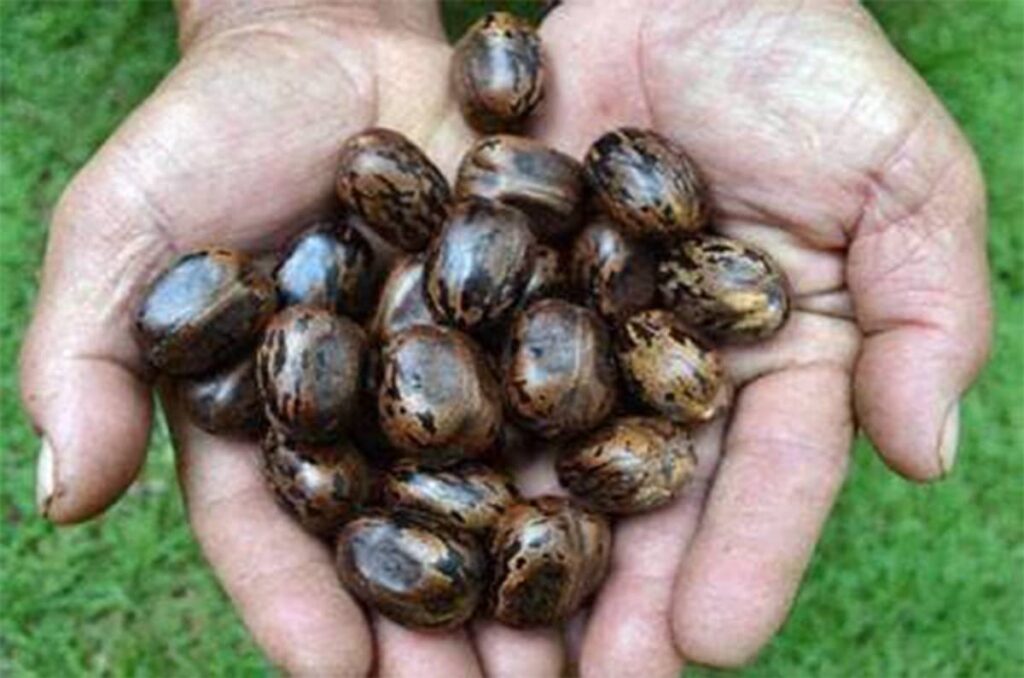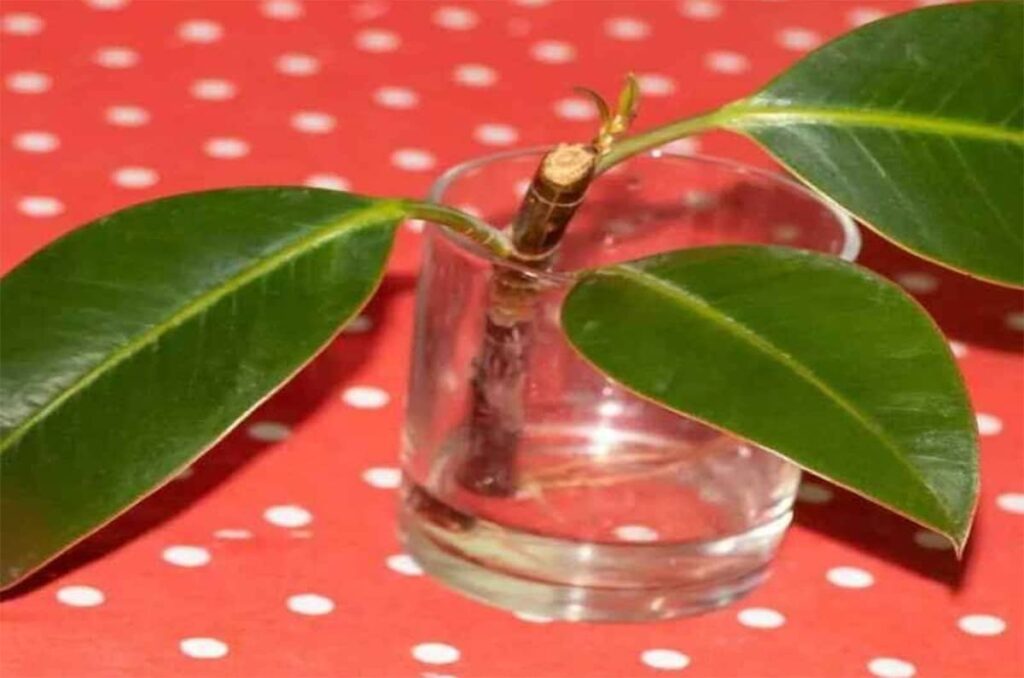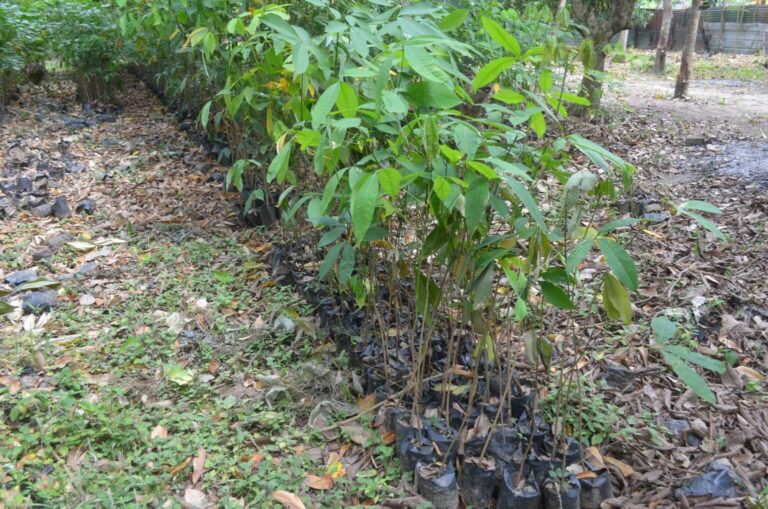Management practices
Rubber Propagation
Rubber propagation is mainly done through budding, as seed propagation results in inconsistent traits.

Rubber propagation by seeds
Rubber propagation by seeds is mainly used for growing rootstocks rather than direct commercial planting, as seed-grown plants exhibit genetic variability in yield, growth, and disease resistance. Seeds should be collected from healthy, high-yielding trees and sown soon after harvesting, as their viability declines rapidly. While seed propagation is less reliable for large-scale rubber cultivation, it provides a strong root system for budding, ensuring better adaptability and growth in field conditions.

Rubber propagation through budding
Rubber propagation through budding is the most reliable method for producing high-yielding and disease-resistant plants. This technique includes grafting a bud from a superior mother tree onto a seed-grown rootstock, ensuring genetic uniformity and desirable traits. Green budding is the widely used method, performed when the tree is actively growing for better grafting success. Proper nursery management, including careful selection of budwood and precise grafting, is crucial for producing healthy, vigorous rubber plants ready for field planting.
Agronomic Practices for Rubber Cultivation
Site Selection
The success of rubber cultivation starts with proper site selection. Farmers must select areas with sufficient rainfall, well-drained soil, and a favorable climate conditions. The next step involves preparing the land, which includes clearing the field of weeds, rocks, and any other vegetation. Proper land preparation ensures that the rubber trees have adequate space and nutrients to grow and thrive, setting the foundation for a productive plantation.
Water Management and Irrigation
Rubber trees require consistent moisture for healthy growth. Effective water management, including irrigation systems such as drip irrigation for young trees and flood irrigation for mature trees, is essential. During the dry season, irrigation helps maintain consistent moisture levels in the soil. Additionally, techniques like mulching and intercropping with moisture-retaining plants can help conserve water and reduce the need for frequent irrigation.
Pest and Disease Management
Rubber trees are susceptible to various pests and diseases, such as white root disease and Corynespora leaf fall. Preventative measures like selecting disease-resistant clones, maintaining proper field sanitation, and using organic treatments can help control these threats. In severe pest or disease outbreaks, farmers may need to use targeted chemical treatments, although sustainable management practices should be prioritized to protect the environment and workers’ health.
Nursery Management
Effective nursery management is essential for producing high-quality rubber plants. It starts with selecting superior mother trees for budwood, ensuring consistency in desirable traits. Bud grafting is carefully performed to transfer these traits to new plants. Proper nursery care, including shade management, watering, and pest control, ensures the growth of healthy, strong plants ready for field planting.
Field Planting

Planting Layout and Spacing
Proper spacing in rubber plantations is essential for healthy growth and productivity. The recommended spacing is 3m × 5.5m, allowing good air circulation, light penetration, and reducing competition for nutrients and water. In high-rainfall or fertile areas, wider spacing may be needed to prevent waterlogging and support root development. Balancing tree density with available resources ensures optimal yield and long-term sustainability.
Weed Management
Weeds in rubber plantations compete with trees for nutrients, water, and sunlight, potentially reducing yield. Common weeds include grasses, which require regular mowing, as well as broadleaf and woody weeds that can crowd out rubber plants. Effective weed management is essential for maintaining plantation health and optimizing productivity.
Control methods include manual removal, which is labor-intensive but effective, especially for young plantations. Chemical control using herbicides can manage persistent weeds but must be applied cautiously to avoid environmental harm. An integrated approach combining manual, mechanical, and chemical methods, along with mulching and intercropping, provides a sustainable and efficient weed management strategy.
Training and Pruning of Rubber Plants
Proper training and pruning of rubber trees are essential for healthy growth and maximum latex production. Training helps trees develop a strong, straight structure, while pruning removes excess branches, improving light penetration, air circulation, and resistance to pests and diseases. Regular pruning enhances tree longevity and productivity.
Formative pruning in young trees shapes their growth, while maintenance pruning in mature trees removes dead or diseased branches and maintains a strong central stem. Tapping panel management is also essential for sustaining latex yield, requiring careful tapping techniques and rotation of panels to prevent damage and ensure long-term productivity.
